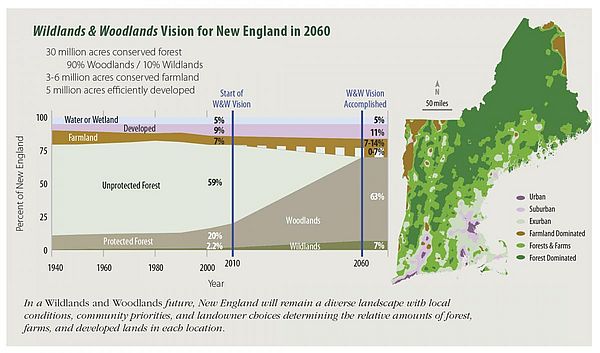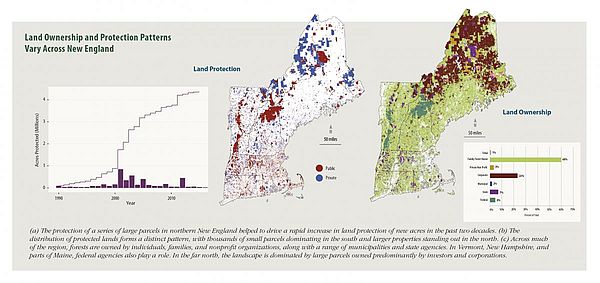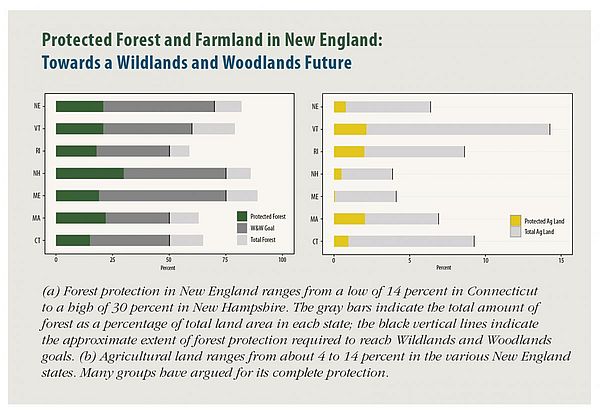Over the last 8 years, Harvard University has been collaborating with scientists, conservationists, and communities around New England to develop a scenario for sustainable growth which maintains the economy while protecting the environment and the beauty of our working landscape. The Wildland and Woodlands Vision (WWV) calls for a collaboration among conservationists and willing landowners to permanently protect a sustainable landscape in New England. The goal is ambitious with a target of 80% of the landscape being maintained for forest and agricultural management by 2060. The remaining 20% of the landscape focused on smart growth and development.
The stated goal for Cold Hollow to Canada (CHC) is to conserve 40% of the large core forest habitat and connecting landscapes by 2030 within our seven-town region. CHC works to conserve working forest, while the WWV calls for 10% of the forest to be designated as wilderness. These two goals compliment and overlap. For CHC, wilderness preservation may be best left to public properties, while private lands will almost always be considered working forest.
Today 88% of New England is farm and forest while development covers almost 10% of the landscape. Farms and forest are critically important to the region’s economy, ecology, and to the health of the people us who live here. Our forests remove more than 760,000 tons of air pollution each year and are worth $550,000 in health benefits, one of which is clean drinking water. Another $10 BILLION goes to the annual tourism industry. This forest also provides global significance by offsetting 20% of the region’s carbon dioxide emissions.
To reach the WWV goal we need to triple the pace of conservation to protect 23,000,000 acres. CHC want to protect 23,000 acres. Elegant isn’t it?
The threat right now is the annual loss of forest land to development. Each year across New England we lose 24,000 acres of forest each year. At the current rate, we will lose what is repeatedly seen as our sense of place, and all the benefits to wildlife, recreation, climate change mitigation, health and the economy of the working landscape.
State and federal funding have declined nearly 50% between 2008 and 2014. Despite this there is hope, and we are gaining ground. The call to action includes accelerate the pace of conservation; manage more land, ecologically and sustainably; grow smart, support rural economies, increase funding for land conservation, and reduce consumption and conserve resources. Since 2000, forty-three new partnerships, also known as Regional Conservation Partnerships, have been formed that work in collaboration to protect the landscape we love. CHC is one of those Regional Conservation Partnerships and we’re poised to work toward this collective goal for conservation in New England.


